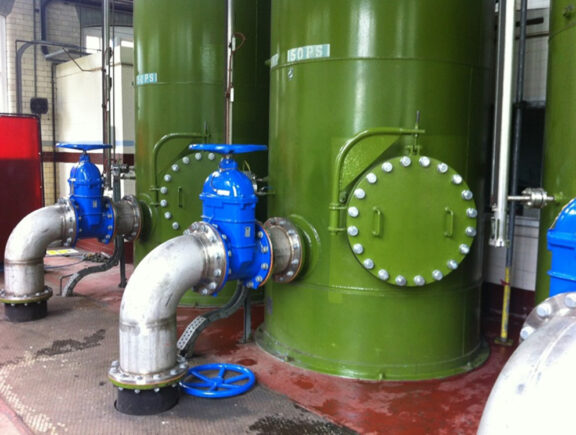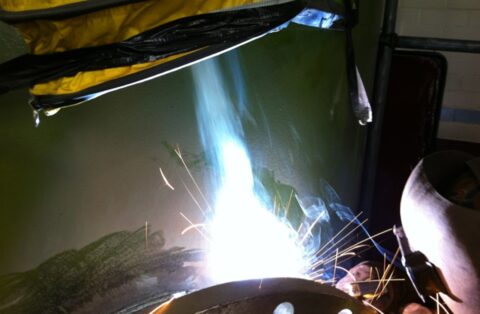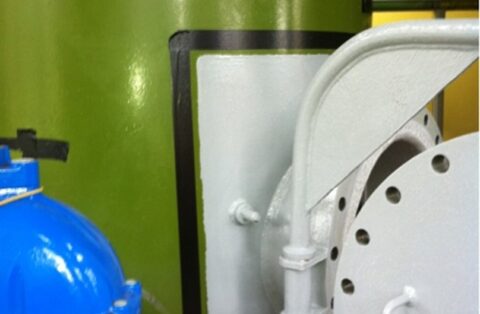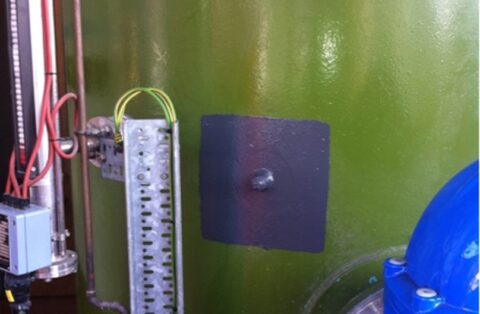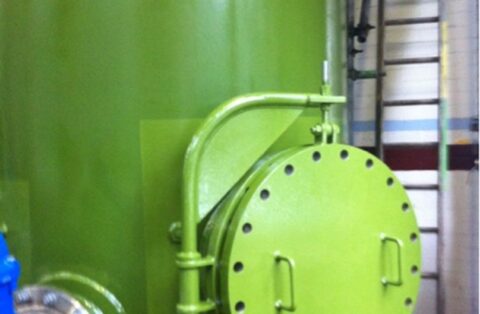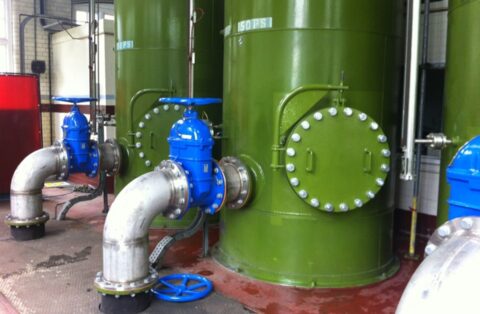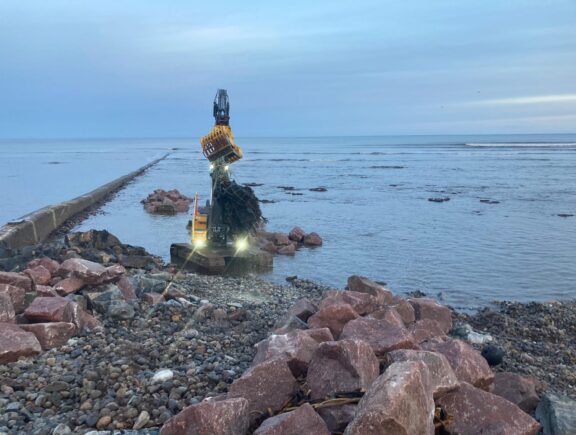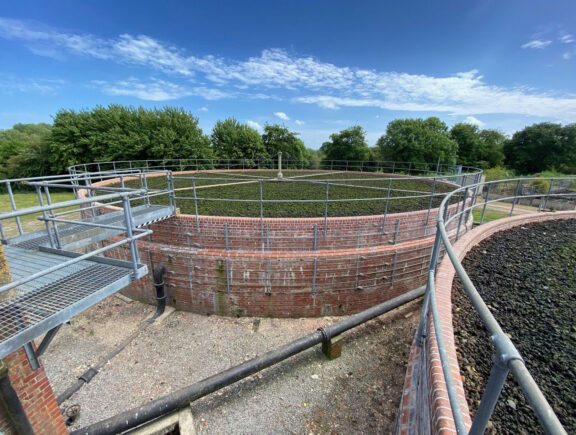A meeting was held on site to agree the locations of the new manways and to take readings of the thickness of the vessels, so designs and calculations could be produced. Once these had been agreed, the new manways were manufactured, a start date was set, and the vessel was drained.
Initially, external scaffolding had to be erected to enable access to the top of the vessels, this allowed for the removal of the Pressure Release Valve’s and all other sensitive equipment that could get damaged during the refurbishment works. A new 600mm hole was then cut into the specified location ready for the new manway to be installed. The new manway would provide safe access and egress for any future inspections as well as any future works.
Blasting works were then completed to remove previous coatings and spent grit from inside the vessel. All dust and fumes created during welding and blasting works, were extracted away from the working area and deposited directly into a closed skip.
The vessel then received an internal inspection and a Magnetic Particle Inspection test was carried out on welds to the manway. After the visual inspection and MPI were completed and passed, the vessel was prepared for a hydro-test. Preparation work included the replacement and installation of the drain pipework.
For the hydro test, the vessel was filled with water and pressurised to 15.5bar for 30 minutes, the test resulted in a pass. The pressure release valve was also tested to ensure it was fit for purpose.
Internally the vessel received 3 protective coatings of Polyurethane, an approved DWI Regulation 31 material. Externally a solvent-free epoxy coating was applied to the manway and any other required areas. A UV-stable polyurethane coating was then applied to these areas to match the existing colour.
After a seven-day curing period, the vessel was washed down and all internal surfaces were chlorinated. The manway was bolted up and a new nipple and isolation valve was installed to allow for the new pressure gauge to be fitted.
The works were repeated on the two remaining vessels, the site was cleared, and the vessels were handed back to the client, ready to be put back into service.
